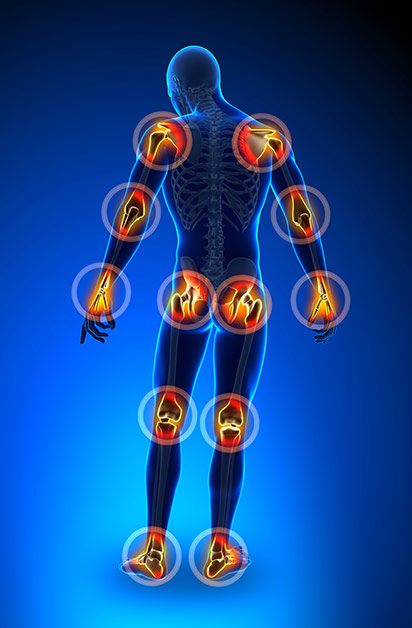Pain Management
Medication
Acetaminophen or Tylenol is safe and effective and available without prescription.
Non Steroidal Anti-inflammatories (NSAID) are equally as effective and can be taken with Tylenol. They compliment each other and work in different ways against pain. NSAID work as an anti-inflammatory and a pain killer. The anti-inflammatory effect is only achieved if taken routinely or daily. Just like blood pressure medication the benefit is only seen if taken regularly. Ibuprofen (Advil) or Naprosyn (Aleve) are NSAID drugs available without prescription. Stronger such drugs are available from your Doctor.
The risks with such drugs are indigestion, heartburn and possible bleeding from the gut. Any such side effects can be reduced by taken gut protective medications or taking such medications with food. They are excreted by the kidney so those with kidney impairment should not use. The risk of elevating blood pressure and most side effects with over the counter medications is minimal.
Topical creams are of benefit and can be used before bed and first thing in the morning. Various types are available and are often found in the same location at your drug store.
Injections
The use of joint injections can be very helpful in reducing and relieving pain. They are often used when a patient has an exacerbation or flare up of their arthritis and can be used to return the patient to their previous level. They are also used to supplement when patients are reaching maximum medical management with pain medications. The response to such injections varies amongst patients and the worse the arthritis the less the effect they are likely to have. Bone on bone arthritis is beyond the use of such injections. Ideally such injections should provide at least a benefit for 3 months any less and their use is probably not worth pursuing. They can be given up to 4 times a year as long as there is benefit. Only corticosteroid type injections are supported for the use in arthritis. The use of other injections that are available have not been proven at this time by the respective orthopaedic associations and are not covered by OHIP in Ontario Canada.
Exercise
Regular exercise in the form of cardiovascular activity is recommended, as it generates the body’s natural pain killers (endorphins) and maximises muscle use, prevents joint stiffness, and aids in general well being. As part of a calorie controlled diet, it can aid weight loss which has shown to have a significant effect on reducing joint pain. We recommend cycling, elliptical and swimming which provides an efficient work out whilst limiting the impact on your joints.
Alternative Treatments
The use of herbal medicine such as Glucosamine sulphate has shown some benefit in helping patients with arthritis. If you wish to try (I recommend a 3 month trial) and if it works, great! However, if you don’t see any effect, don’t continue.
Acupuncture and massage is beneficial in helping relieve the muscle pain associated with arthritis and can be very helpful but expensive if you don’t have insurnace coverage for such. If this is prescribed by a doctor most insurance plans can cover this form of treatment.
Bracing
Bracing used around the knee can give some support and relief during work or exercise, but is not recommended for wearing full-time.
Orthotics
Orthotics may be of use if your suffering foot or lower leg muscle aches. There is no literature at this time to support it as a first line treatment for hip or knee arthritis and can be extremely expensive if your insurance plan does not cover.




